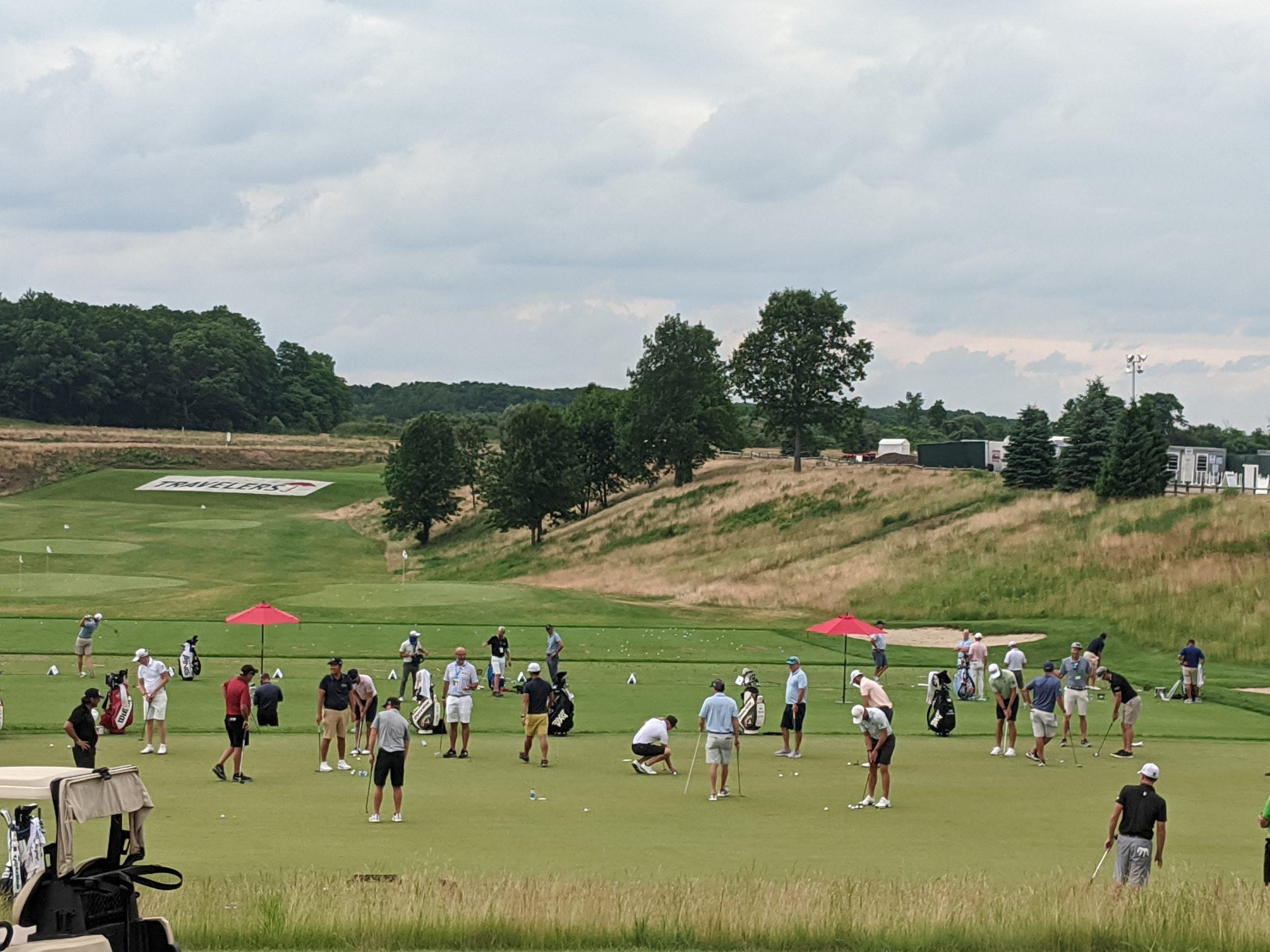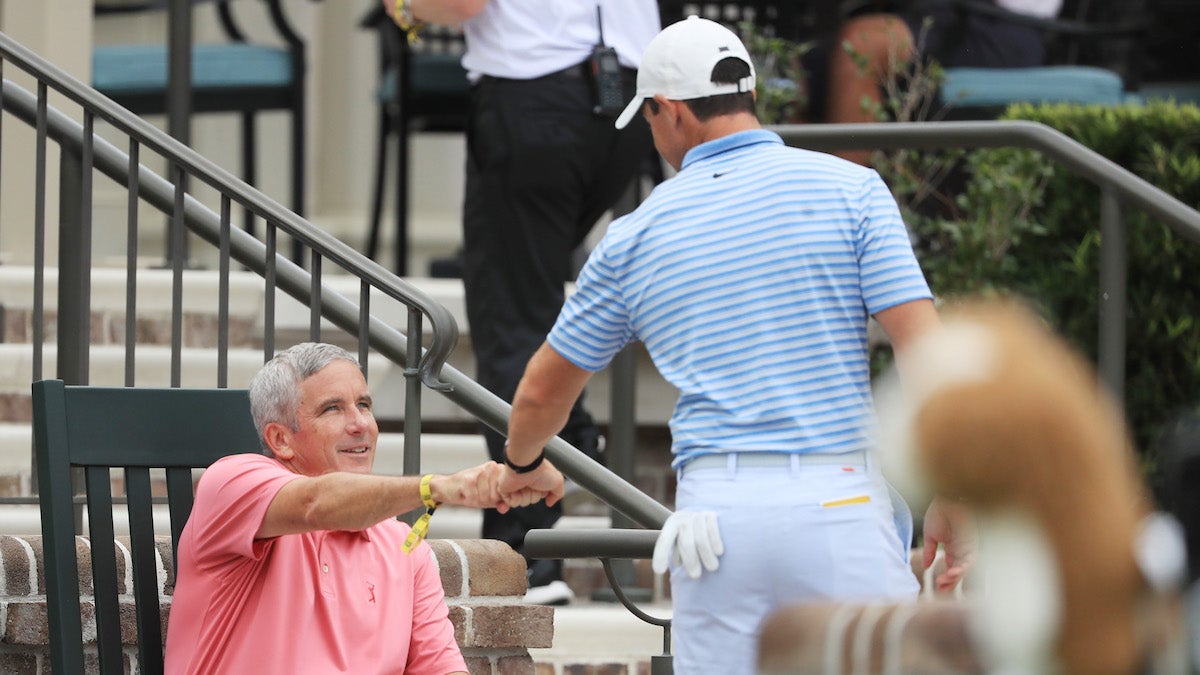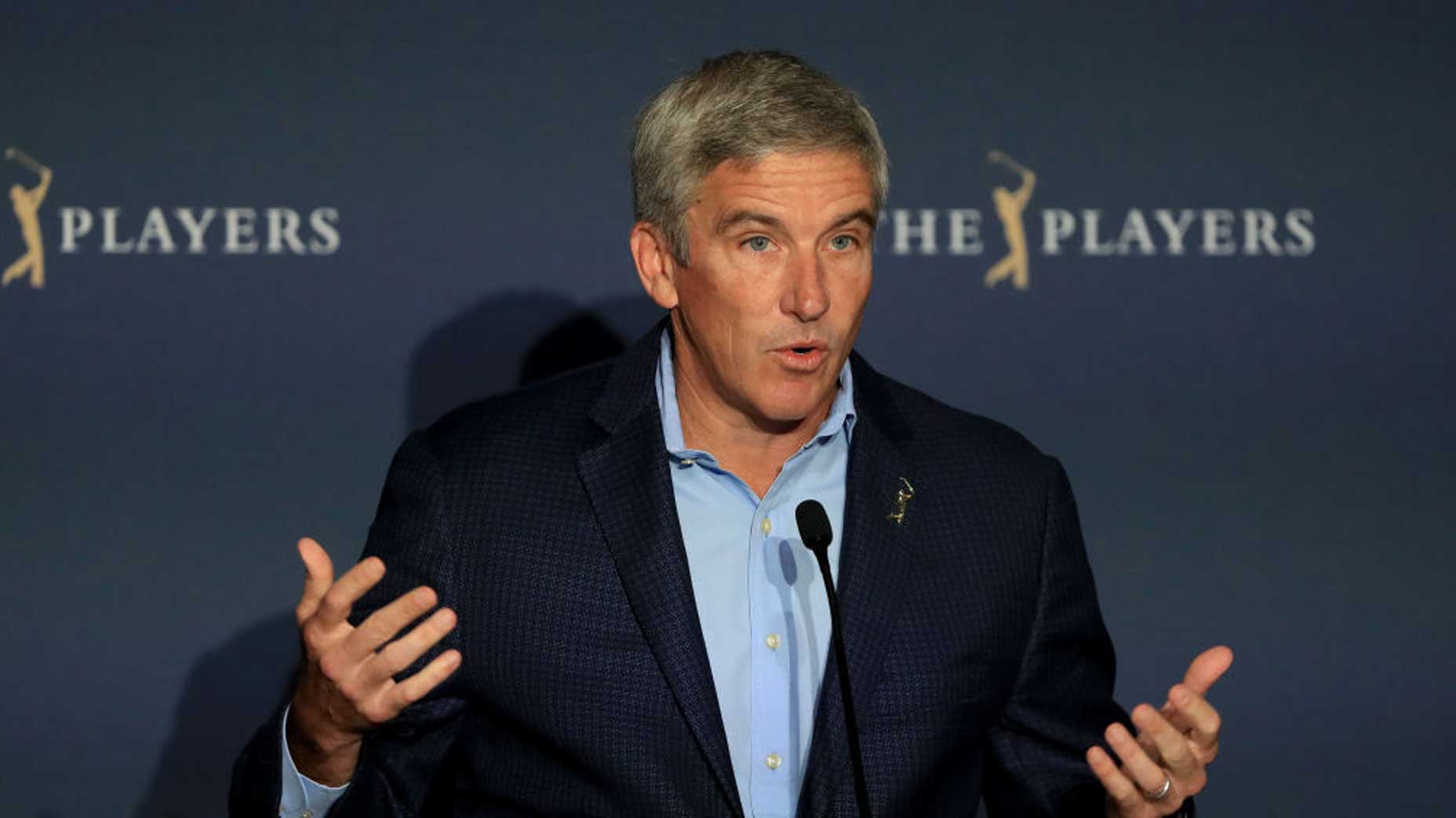CROMWELL, Conn. — I’m on the ground this week at the Travelers Championship, my first week on the road since Bay Hill, in early March, when the prevailing attitude toward the coronavirus was merely a thing that was happening somewhere else. I was excited to attend the Travelers — not just to get back out on Tour but also to see how the entire operation would be different in these remarkable times.
Large swaths of the event at TPC River Highlands are obviously quite different. The absence of fans aside, every PGA Tour staff member and volunteer I saw was wearing a mask. Cleaners orbited every object in a constant loop. Upon arrival, I was issued a saliva test, had my temperature screened and was ushered to my plexiglass media box, issued two bottles of hand sanitizer, two masks, a pack of sanitizing wipes, an access key to the virtual press conferences, and provided with a set of strict safety guidelines.
The system in place isn’t perfect, and any rational person knew it wouldn’t be — there are just too many variables. This is the first week coaches and media were tested, all of whom have been permitted to roam the grounds even as they await their official test results. That was always the most concerning loophole in the PGA Tour’s policy: that players and caddies could be carrying the virus and potentially spreading it on-site, unknowingly, until proven that they have the virus.
Still, the sweeping safety procedures the PGA Tour has been imposing have been impressive and are improving by the week. The Tour should be commended for its diligence.
But the chain is only as strong as its weakest link, and unfortunately, the PGA Tour has a big one: The laissez-faire attitude of its players and caddies.
PGA Tour issues stern warning to players after positive coronavirus testsBy: Sean Zak
Only after Brooks Koepka’s WD did I witness a handful of players wearing masks, and even then, it was only a handful. On Wednesday afternoon, coaches roamed the range with impunity. There were countless fist bumps and handshakes, and equipment changing hands. At one point, I witnessed a group of eight players and caddies huddled on a small tee box, waiting to tee off, one of the players killing time by going through another’s bag, grabbing his clubs and making practice swings before putting them back.
It’s easy to laser-in on individual anecdotes and cast wide generalizations, but the truth is, at least from my two days on site, that through some combination of not caring enough and feeling comfortable enough, the players simply aren’t, in the words of the PGA Tour’s most recent statement on the matter, “doing their part.”

Over the past months, millions of Americans have seen their day-to-day routines upended. In large parts of the country the simplest of golfing pleasures, like retrieving one’s ball from the hole, or walking into a clubhouse, have been interrupted (and, yes, big picture, we’re very aware these altered customs are trivial). Golfers yearn for some sense of normalcy, and the return of the PGA Tour was supposed to provide it. In retrospect, perhaps the Tour should’ve followed the NBA’s model and pitched up at a sprawling property like Pinehurst, taken over the resort and played different courses over a series of weeks.
But even still, it’d be impossible to divorce the personal responsibility players and caddies have to keep safe everyone in the Tour’s traveling circus, something Justin Thomas spoke to on Wednesday.
“I think as weeks go on, it’s easier to get a little bit lazier and maybe get a little bit more lenient on what you know you should and shouldn’t do,” he said. “If you see somebody doing something wrong, don’t just let it go and tell everybody about like, oh, this person was doing something wrong, because you’re in the same boat. That’s where everyone just needs to hold themselves and everybody else accountable. If that involves getting a little bit stricter, then so be it.”

Professional athletes live in a comfort zone and often aren’t accustomed to following social protocols or mandates. Players may think they’re doing enough but many aren’t — the fist-bumping and handling of other players’ clubs and socializing at bars and restaurants around Tour stops needs to be curtailed. On Wednesday afternoon, Charley Hoffman, who is the chairman of the Players Advisory Council, told Golf Channel that perhaps the Tour’s successful first week back — no players or caddies tested positive at Colonial — fueled a “false sense of security.”
That mindset is not going to cut it anymore. Mistakes can be excused, but a widespread lack of effort from players cannot be. Maybe the Tour needs to consider having volunteers whose only job is to follow players around and enforce distancing. Or perhaps players will only get the message if the Tour begins doling out penalties or suspensions to players who fail to distance. Maybe more frequent testing is required, or events without caddies. Or maybe the Tour needs to take a bolder step still and shut down again.
Either way, the players need to adjust their behavior and start playing by the rules.











